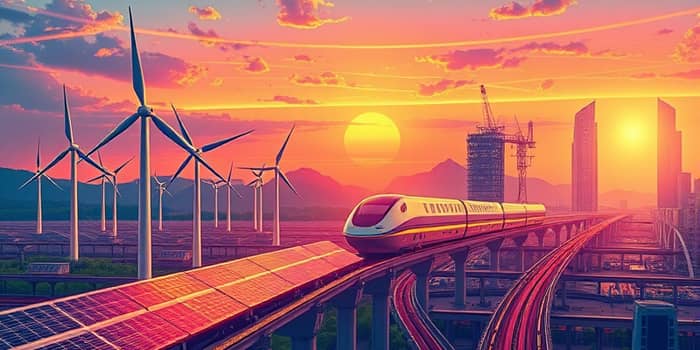
As investors navigate market volatility and seek stable returns, infrastructure has emerged as a beacon of resilience and long-term opportunity.
Over the 12 months ending Q1 2025, listed infrastructure outperformed global equities by approximately 660 basis points, showcasing its defensive appeal. In turbulent economic and geopolitical environments, investors turn to assets that offer predictability and income protection.
At the same time, private infrastructure allocations have delivered annualized returns in the 8-11% range, underpinned by long-term contracts and regulated cash flows. This combination of yield and stability has fueled growing allocations across portfolios worldwide.
Among subsectors, digital and green energy projects are drawing the lion’s share of capital. Demand for data centers has surged in response to AI, cloud computing, and 5G rollouts, while renewable energy continues to benefit from decarbonization mandates and supportive policies.
Investors increasingly align portfolios with a set of powerful, enduring themes shaping global infrastructure demand.
The United States commands roughly half of global infrastructure AUM in open-ended funds, with strong inflows into money market vehicles and ETFs, even as traditional mutual funds experience outflows. In contrast, Asia-Pacific growth is driven primarily by direct investment flows, reflecting local governments’ push for self-sufficiency and connectivity projects.
Europe has seen a stabilization of fund flows into renewable energy and transport efficiency initiatives, supported by the EU’s Green Deal and NextGenerationEU recovery fund. These regional nuances highlight the diverse pathways investors take to access infrastructure’s benefits.
Despite robust inflows, infrastructure investors must navigate policy shifts, tariff changes, and regulatory uncertainty. Trade tensions, especially U.S.-China disputes, pose potential headwinds for global logistics and transport networks.
Financing costs, though elevated post-2022, have shown signs of easing, particularly in Europe and Australia, rekindling dealmaking momentum. Yet a massive funding gap remains: the U.S. alone needs an estimated $9.1 trillion by 2031 to upgrade core sectors, underscoring the scale of opportunity for well-capitalized investors.
Allocating to infrastructure requires a blend of strategic vision and careful due diligence. Consider these principles to harness its full potential:
By aligning with megatrends, balancing risk across geographies, and selecting assets with robust contractual underpinnings, investors can build a resilient infrastructure allocation that weathers uncertainty and contributes to sustainable development.
Global fund flows will continue to favor infrastructure as the world seeks to modernize, decarbonize, and digitalize its economies. For investors, this represents not just a path to reliable returns, but an opportunity to shape a more connected, resilient, and sustainable future.
References













